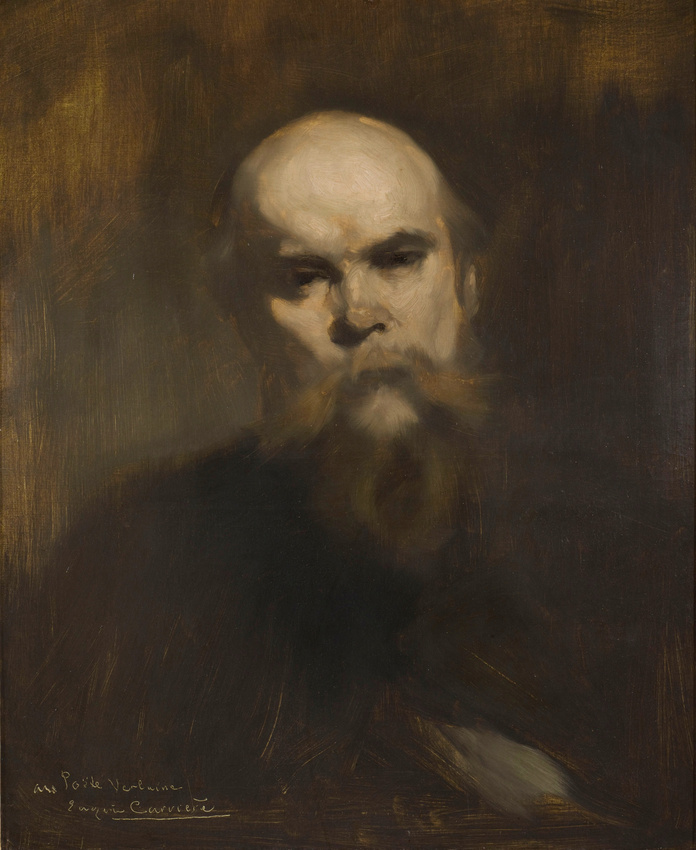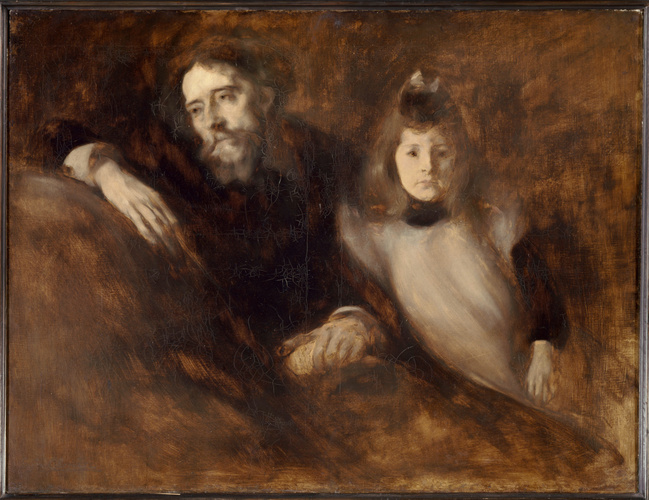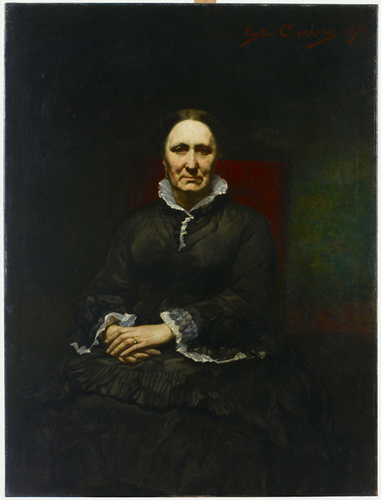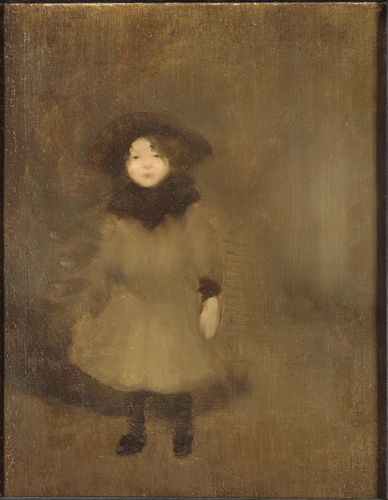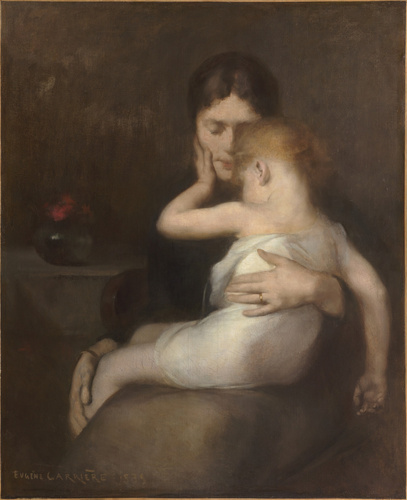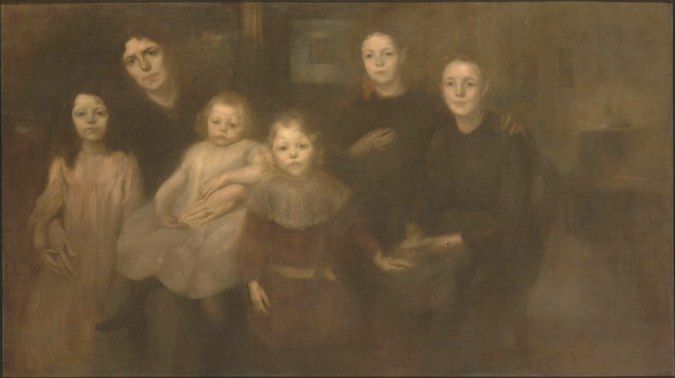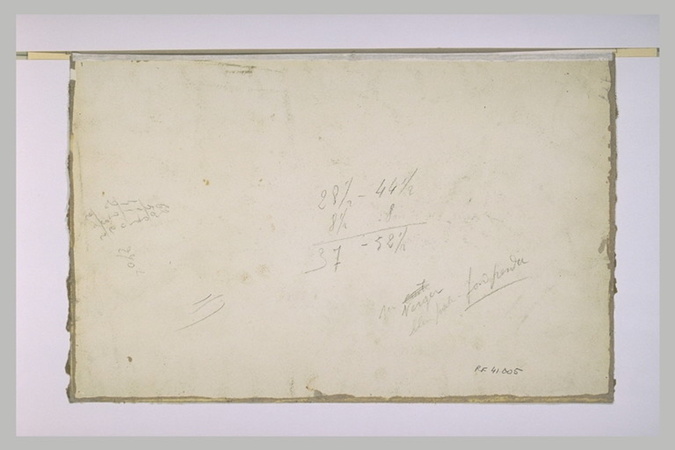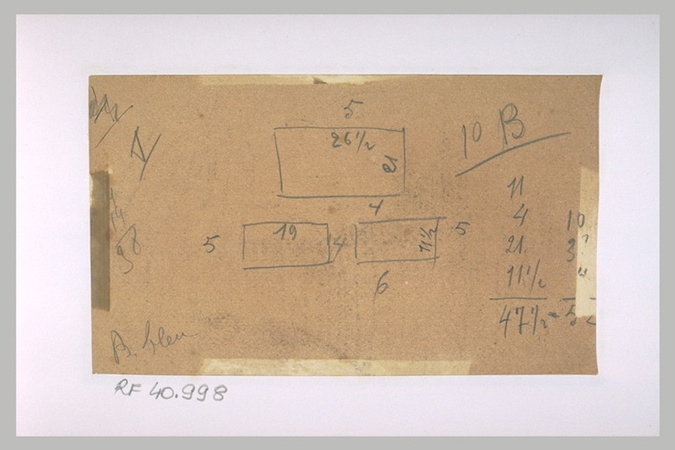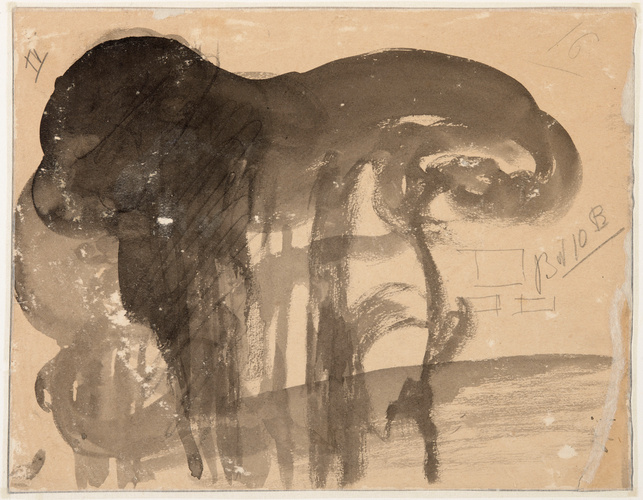Paul Verlaine
In the 1880s and 1890s, Carrière made intimist portraits of people he met among the Symbolists, in left-wing political milieus or literary circles. He thus painted the novelist Alphonse Daudet in 1891, and Paul Verlaine, whose work and tormented personality were very important for the generation of Symbolist artists.
Carrière had met Verlaine at Broussais Hospital in 1890 and legend has it that the poet posed only once for this portrait. The face, which emerges from the background like a mask or an expressive head, is characteristic of Carrière's "psychological portraits" and far from being a society or official portrait brings out the tormented genius of his subject. The vagueness of the dark background which the faces and sometimes the hands of his models loom out of have justified stylistic comparisons with the contemporary sculpture of Medardo Rosso or the "unfinished" aspect of Auguste Rodin's work.
The portrait of Paul Verlaine is one of Carrière's most famous portraits and was exhibited several times during the artist's lifetime, in Paris and Brussels. Carrière gave it to Verlaine – the dedication on the lower left of the painting reads "To the poet Verlaine, Eugène Carrière", – and in return, Verlaine dedicated to him a sonnet published in his Oeuvres posthumes. The painting was widely circulated as an engraving by the printer Lemercié after the poet's death in 1896.



